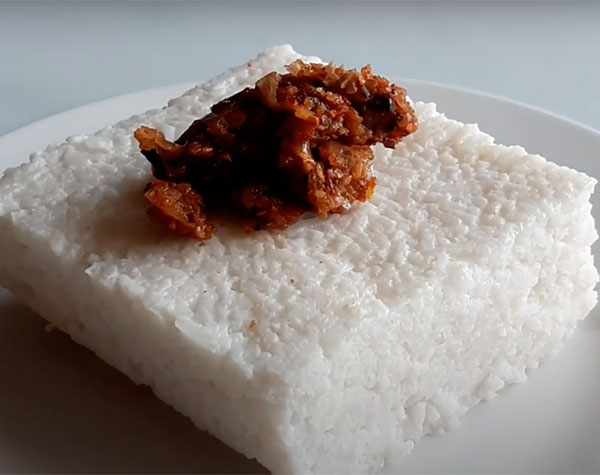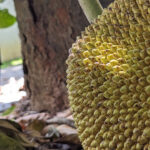
Sri Lankan Jackfruit Curry: Exploring the Delights of Kirikos
July 30, 2024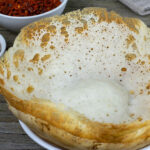
Plain Hoppers: A Veg Culinary Tradition from Sri Lanka
August 2, 2024
Sri Lankan Jackfruit Curry: Exploring the Delights of Kirikos
July 30, 2024
Plain Hoppers: A Veg Culinary Tradition from Sri Lanka
August 2, 2024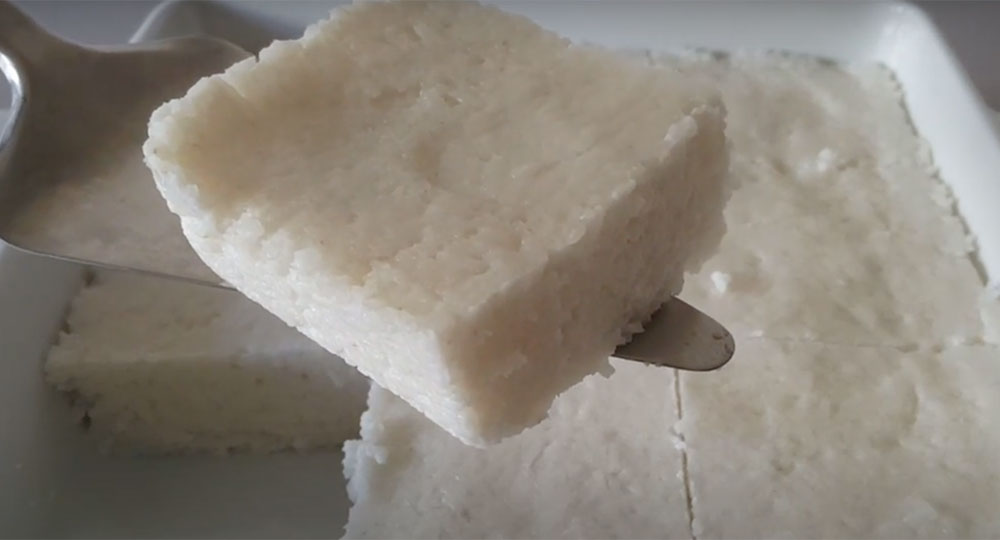
KIRIBATH (Milk Rice )
Kiribath is a traditional vegetarian food and it is a Sri Lankan dish often eaten during special occasions and celebrations. The term "kiribath" translates to "milk rice" in Sinhalese, and it's a dish made by cooking rice with coconut milk, which gives it a rich, creamy texture and a slightly sweet flavor. It’s typically served with various vegetarian accompaniments like jaggery (a type of unrefined sugar), “spicy sambols”, or curry.
Kiribath is especially popular during the Sinhala and Tamil New Year and other festive occasions, symbolizing prosperity and good fortune. It's usually prepared in a special way, where the rice is cooked until it absorbs the coconut milk and then allowed to set and firm up. Once it cools, it's cut into pieces, making it easy to serve.
30 mins
Easy
Serves 4
Why Find Vegetarian Recipes?
kiribath (milk rice) is inherently a vegetarian dish. It is made from rice and coconut milk, both of which are plant-based ingredients. Here’s a breakdown of why kiribath is considered vegetarian:
Main Ingredients
Rice: A staple grain that is plant-based and forms the base of the dish.
Coconut Milk: Made from grated coconut and water, also entirely plant-based.
Preparation
Kiribath is prepared by cooking rice in coconut milk, which gives it its creamy texture and slightly sweet flavor. No animal products are involved in this process.
Vegetarian Options: Kiribath is typically served with various vegetarian accompaniments like lunumiris (a spicy sambol), pol sambol (a coconut-based sambol), and jaggery (a sweetener). These are also vegetarian.
While kiribath itself is vegetarian, if it is served with non-vegetarian sides or garnished with ingredients like Maldive fish, it could lose its vegetarian status. However, traditional kiribath, as prepared with rice and coconut milk and served with vegetarian sides, is entirely suitable for a vegetarian diet.
How to eat “kiribath”
Eating kiribath, or milk rice, is a straightforward and enjoyable experience. Here’s a simple guide on how to enjoy this traditional dish:
- Prepare Your Plate: Cut the kiribath into pieces or squares. It often sets firmly after cooling, making it easy to cut and serve.
- Choose Your Accompaniments: Select the traditional supplements you prefer or have available, such as lunumiris, pol sambol, seeni sambol, jaggery, or coconut milk curry.
- Combine and Taste: Take a piece of kiribath and combine it with your chosen accompaniments. You can either mix them together on your plate or take a bite of kiribath with a bit of each accompaniment in each mouthful.
- Enjoy the Flavors: Kiribath has a mild, creamy flavor from the coconut milk, which pairs well with the spicy, tangy, or sweet accompaniments. The contrast of flavors enhances the overall eating experience.
- Eat with Your Hands or Utensils: In Sri Lankan culture, kiribath is traditionally eaten with the fingers, but you can use a spoon or fork if you prefer.
- Pair with Drinks: If desired, enjoy it with a cup of tea or a traditional Sri Lankan beverage.
Kiribath is often enjoyed during special occasions, so it's not just about the food but also the cultural and communal experience that accompanies the meal.
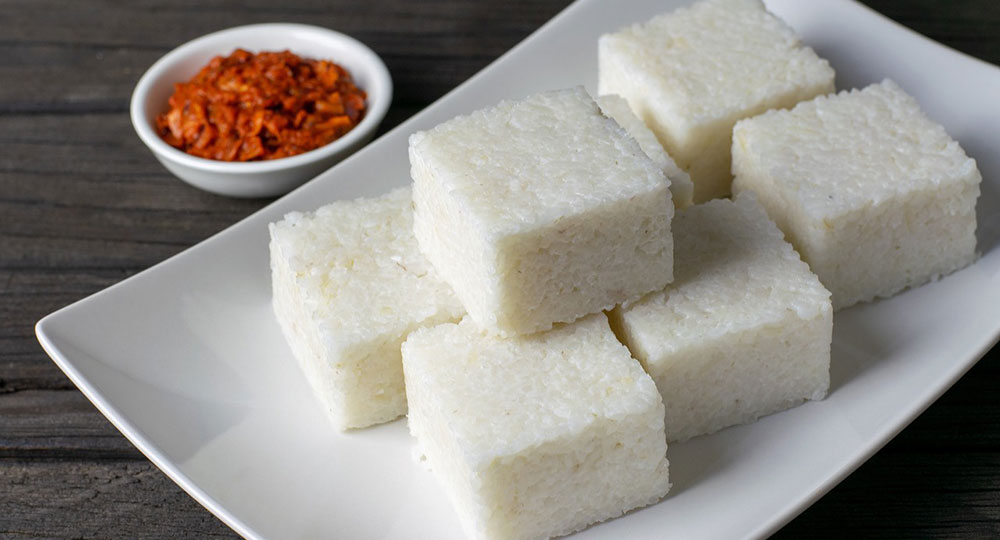
Nutritional properties of milk rice
When considering kiribath (milk rice) as a vegetarian dish, its nutritional properties primarily come from its main ingredients: rice and coconut milk. Here’s a detailed look at the nutritional aspects of this vegetarian recipe:
1. Carbohydrates
- Rice: A major source of carbohydrates, which are the body’s primary energy source. Rice provides a substantial amount of energy and helps maintain blood sugar levels. The carbohydrate content is high, making kiribath a filling dish.
2. Protein
- Rice and Coconut Milk: Both rice and coconut milk contribute a modest amount of protein. While rice has a low protein content, coconut milk adds a small amount. For a more protein-rich meal, additional protein sources like legumes or nuts can be included as side dishes.
3. Fats
- Coconut Milk: Contains fats, particularly saturated fats. These fats are a source of energy and are important for certain bodily functions. Coconut milk also includes medium-chain triglycerides (MCTs), which are easier for the body to digest and convert into energy.
4. Fiber
- Rice: The fiber content depends on the type of rice used. White rice, which is commonly used in kiribath, has less fiber compared to brown rice. Brown rice retains the bran and germ, providing more fiber, which aids in digestion and helps maintain bowel health.
5. Vitamins
- Coconut Milk: Provides essential vitamins, though in modest amounts. These include:
- Vitamin C: Important for immune function and skin health.
- Vitamin E: Acts as an antioxidant and supports skin health.
- B Vitamins: Important for energy metabolism and red blood cell production.
6. Minerals
- Coconut Milk: Contains several essential minerals:
- Potassium: Helps regulate fluid balance and muscle function.
- Magnesium: Supports muscle and nerve function, and bone health.
- Iron: Essential for oxygen transport in the blood.
7. Calories
- Rice and Coconut Milk: Kiribath is relatively calorie-dense due to the rice and fat content from coconut milk. This makes it a hearty dish, but also means it should be consumed in moderation if you're managing your calorie intake.
8. Sugars
- Coconut Milk: Contains natural sugars, contributing to the dish’s slightly sweet taste. If additional sweeteners or accompaniments like jaggery are used, the sugar content will be higher.
Overall Nutritional Profile
Kiribath is a balanced vegetarian dish providing energy from carbohydrates and fats. Its fiber content can vary based on the type of rice used. While it provides some vitamins and minerals, it is relatively low in protein. To make the meal more nutritionally complete, consider adding protein-rich vegetarian side dishes like lentil curry or beans, and including a variety of vegetables for additional vitamins and minerals.
How to Cook "KIRIBATH"
Vegetarian Recipes For Healthy
Cooking kiribath (milk rice) is a relatively straightforward process that involves cooking rice with coconut milk until it becomes creamy and firm. Here’s a step-by-step guide to making traditional kiribath:
Ingredients:
- 1 cup of rice (white or brown rice)
- 2 cups of coconut milk
- 1 cup of water
- 1/2 teaspoon of salt
Instructions:
1. Rinse the Rice
- Place the rice in a fine-mesh strainer or bowl.
- Rinse under cold water until the water runs clear. This helps remove excess starch and prevents the rice from becoming too sticky.
2. Cook the Rice
- In a medium-sized pot, combine the rinsed rice, 1 cup of water, and 1/2 teaspoon of salt.
- Bring to a boil over medium-high heat.
- Once it reaches a boil, reduce the heat to low, cover the pot with a lid, and simmer for about 10 minutes, or until the rice is partially cooked and most of the water is absorbed.
3. Add Coconut Milk
- Stir in the coconut milk. Mix well to ensure the rice is evenly coated with the milk.
- Continue to cook on low heat, stirring occasionally to prevent sticking. Cook until the rice is fully cooked and has absorbed most of the coconut milk, and the mixture has a creamy consistency. This should take about 10-15 minutes.
4. Adjust Consistency
- If the rice seems too dry, you can add a bit more coconut milk or water as needed.
- Conversely, if it’s too wet, you can cook it a bit longer to let some of the liquid evaporate.
5. Set the Kiribath
- Once the rice is cooked and the consistency is creamy but firm, transfer it to a flat dish or tray.
- Smooth it out with a spatula to ensure an even thickness.
- Let it cool for about 30 minutes. This allows the kiribath to set and firm up, making it easier to cut into pieces.
6. Serve
-
- Once cooled and set, cut the kiribath into pieces or squares.
- Serve with traditional accompaniments such as lunumiris (spicy sambol), pol sambol (coconut sambol), or jaggery (unrefined sugar).
Tips:
- Rice Type: White rice is commonly used, but you can use brown rice for added fiber and a nuttier flavor. Just be aware that brown rice may require slightly more cooking time.
- Coconut Milk: For a richer flavor, use fresh coconut milk. Canned coconut milk is also a good option if fresh is not available.
- Texture: The final texture should be creamy and slightly firm. If it’s too loose, let it cook a bit longer to thicken; if it’s too firm, add a bit more liquid.
Enjoy your homemade kiribath!
